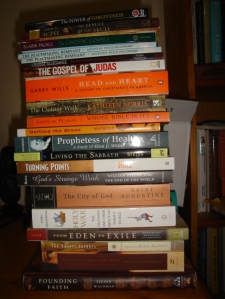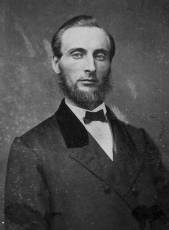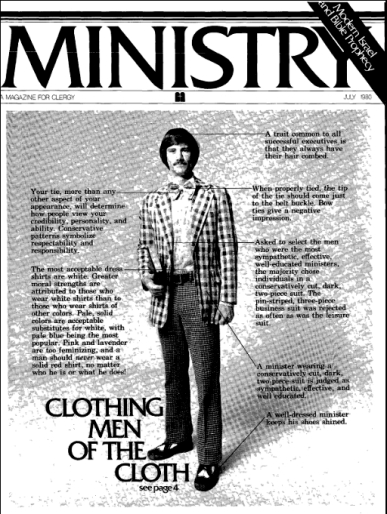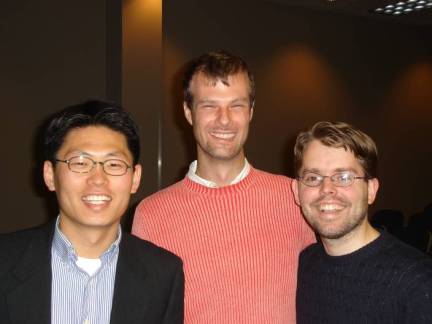Following the AAR Meetings in Chicago I flew to Toronto & then traveled to Oshawa to present a paper at a symposium organized by Barry Bussey called Should I Fight? Conscientious Objection and the SDA Church.
I am very grateful for the financial assistance from both Helderberg College and the Canadian Union Conference that enabled me to attend the symposium. The Symposium was held at Kingsway College who were very gracious hosts providing us with good food & the use of their chapel.
While the number of attendees was somewhat disappointing–very few local SDA pastors even took advantage of the Symposium–the Symposium was videoed and a DVD is to be produced. I hope that this will enable this symposium–on this very important topic–to have a greater impact than just that weekend.
The Symposium began on Thursday evening with presentations from Barry Bussey and Lincoln Steed (Editor – Liberty Magazine). On Friday, presenters included Ronald Lawson (Queens College – The City University of New York) who reviewed the history of Adventism and Military Service from both a sociological & historical perspective. Ron utilized Church/Sect theory to explain the reasons behind the changing of SDA attitudes toward military service, noting that we began as a sect–in high tension with society–but have moved towards a denomination & as such have sought to minimize tensions with society. Thus the SDA Church’s changing attitudes toward military service are essentially one result arising from this desire for acceptance & “mainstreamization”. Ron pointed out that current estimates of soldiers with a SDA background who serve in the US armed forces (as combatants carrying arms) are around 15,000–a far cry from our pacifist stance during the American Civil war! It was great to finally meet Ron, a fellow Australian, Queenslander, & alumnus of the University of Queensland; I have read his articles and utilized them in my research & teaching.
Ron’s presentation was followed by that of Doug Morgan (Columbia Union College) a historian & founder of the Adventist Peace Fellowship. Doug focused on the early history of the SDA Church, pointing out that contrary to what has been believed in the past, SDAs initially took a pacifist position rather than one of conscientious objection. This is particularly evident during the American Civil War. His evidence included the following quotes: the third GC Session in 1865 stated that the SDA Church would “decline all participation in acts of war and bloodshed”; the fifth GC Session in 1867 similarly stated that “the bearing of arms, or engaging in war is a direct violation of the teachings of our savior”; while in 1868 the church noted “that war was never justifiable except under the immediate direction of God”. As Doug pointed out, “Historical accounts since World War II, misconstruing the early Adventist debates over how and when to express their commitment to the government, have tended to obscure the fact that the Seventh-day Adventist Church began as a peace church. Thus, a distorted understanding of the past has contributed to the relatively easy acceptance of voluntary enlistment for armed military service that has become apparent in American Adventism during the past two decades.”
Doug was followed by Jose Mclaughlin a chaplain for Adventist Chaplaincy Ministries. Jose was a bit like Daniel in the Lion’s Den in that environment and it was great that he attended and presented. It was important that the SDA Church’s position on military chaplaincy be heard, despite the very real objections and questions that many Symposium presenters had regarding the theology and ethics of military chaplaincy. Importantly Jose pointed out that the SDA Church regards military service as an issue of individual conscience & not as a test of fellowship. I do feel however that the church needs to take a very close look at military chaplaincy and ask whether our prophetic voice as Christians is in fact silenced or distorted by our participation in the military. As I pointed out in my own presentation, the Truth and Reconciliation Commission of South Africa pointed out that: “The military chaplaincy gave moral legitimacy to a culture characterised by the perpetration of gross human rights abuses. It served to filter out dissenting voices, to strengthen the resolve to kill and to reassure the doubting soldier that he or she was serving the purposes of God. In spite of professions of a loyalty higher than that of the state, chaplains found themselves lending succour to persons trying to kill ‘enemy’ soldiers who were sometimes members of their own denomination.” One has to ask if–in any context–a Christian should be “strengthen[ing] the resolve to kill” of anyone ever.

Jose McLaughlin, Ron Lawson, & Doug Morgan during question time.
After Lunch Alison Bryan, a graduate student at Memorial University in Newfoundland, spoke on Just War theory. Alison’s best moment came when she pointed out that “Christ said ‘Go make disciples’ not ‘go wage war in my name'”. She was followed by Ronald Osborn’s presentation on “The Christ of the Fifth way: Recovering the Politics of Jesus”. Ron is a graduate student at the University of Southern California and gave an excellent presentation influenced by the thought of John Howard Yoder. Ron pointed out that Jesus’ Palestine was a place of “the rich few and the poor many”, and noting that Christians are called to incarnate the Kingdom of God in all areas–including that of economic justice and peace.
Friday evening’s presentation was taken by Olaf Clausen, pastor of the Lethbridge SDA Church in Canada, who served in the Canadian Navy for 12 years–including time spent as a military recruiter. Olaf’s intensely personal & passionate presentation pointed out the various costs associated with joining the military.
Saturday’s presentations began with Karen R. Scott, who asked the question “Where is Your Citizenship?”, pointing out that Jesus simply said to pray for our enemies, and that this wasn’t metaphorical nor a text to be be ignored or explained away. She also noted, referring to the SDA Church, that “Because we are the remnant, we think that God thinks just like we do.” We joined with the College Park SDA Church for the Divine Service, taken by Barry Bussey who shared his grandfather’s experience in WWII in a sermon titled “The War to End All Wars”. You can download the sermon in .mp3 format here. That the Symposium took took place over this weekend was particularly appropriate as November 11 is Remembrance Day in Canada (and other Commonwealth nations). Saturday’s program continued after lunch with presentations by Ginger Hanks Harwood (La Sierra University) whose presentation “Did Christ Give You Permission to Beat Your Ploughshares Into Swords?” definitely had the best title; but was also an excellent survey of changing SDA attitudes toward military service, rich in historical detail.

Ginger Hanks Harwood
The afternoon & evening sessions were taken by Barry Bussey who focussed on the experiences of SDA conscientious objectors in Canada. Barry also introduced us to clips of his not-quite finished documentary called “For Conscience Sake”. Barry & producer Douglas Bruce travelled extensively throughout Canada & the US interviewing Canadian SDA Conscientious Objectors from WWII. Watching these interviews was fascinating & I hope that the documentary challenges SDAs all over the world to consider their position on military service. A very short trailer is viewable here. “This is a trailer of the documentary “For Conscience Sake” currently under production. It tells the story of Canadian Adventist conscientious objectors in WWII who refused to take the rifle when conscripted. They worked in the “Alternative Service Camps” throughout Canada and some eventually joined the Canadian military as Medics. This is a story about conviction of religious conscience during a time of national crisis. Expected release is March 2009. Copies of the 60min final production can be preordered by contacting Tina Keys – cost is $25.00 including taxes and shipping.”
Joel Willet is a graduate student at the University of Kentucky and served as a military police officer for nearly four years. His presentation was very personal and as a student of Diplomacy & National Security he raised a number of interesting points concerning the use of force. Joel took a very realist position and asked important questions that must be answered by modern pacifists.

Joel Willet.
My own presentation titled, “The Spirit of War is the Spirit of Satan” followed Joel’s. “Military conscription in apartheid South Africa was an issue that dominated the lives of generations of white South African young men—including Seventh-day Adventists. From 1952 a system of compulsory military service existed in South Africa, first through a selective service system where men were chosen by ballot, and then from 1967 onwards all medically fit white males were legally required to perform military service for the state upon leaving school. This remained the reality until the last intake for compulsory military service in South Africa took place in July 1992. As early as 1924, Seventh-day Adventists could be exempted from peace-time service in the South African Defence Rifle Association, and in wartime would be exempted from service in a combat capacity. This exemption was reiterated in 1979, when Seventh-day Adventist conscripts were granted particular privileges including being excused from handling a weapon, and were where possible, excused from Sabbath duty. The issue of Seventh-day Adventists and military service in South Africa becomes more complex—as does the issue of military service generally in South Africa—during the 1980s when the South African Defence Force (SADF) was deployed in cross-border conflicts in Angola and South-west Africa (now Namibia); and in the Black township areas to quell Black anti-Apartheid resistance. My paper examined the South African Seventh-day Adventist Church’s attitude towards military service within the context of Apartheid; and will discussed the ethical implications of the Church’s stance of non-combatancy within such a political context.” My paper is available in .pdf format here. Comments are welcome. The paper is a work in progress and a number of significant issues must still be dealt with. I would also like to one day conduct interviews with South African SDAs who were impacted by compulsory military service under the Apartheid Government.
The final presentations were taken by Keith Phillips and Karl Tsatalbasidis, co-authors of a new book I Pledge Allegiance: The Role of Seventh-day Adventists in the Military.

The book is available from a number of sites including here, here, and here. The book is well-written and accessible. Their presentation dealt with a number of important issues including popular misconceptions about the correct translation of the 6th commandment. Karl noted that: Regarding the 6th Commandment. The Hebrew word rasah is the word that is found in the 10 Commandments yet the decalogue does not provide the context to suggest if the word should be translates as murder or kill. This means that the best way to find out the meaning of the word is to investigate its usage in the Bible. It’s mentioned 47 times in the OT. This verb rāsah is used a total of 11 times to identify definitively the intentional slaying of another human being, i.e., “murder,” in the following passages: Numbers 35:16 [2 times], 17 [2 times], 18 [2 times], 19, 21 [2 times], 30, and 31.In contradistinction to the above, rāsah is used 19 times in these “city-of-refuge” passages to indicate the accidental taking of human life, i.e., “manslaughter,” or “killing,” in the following texts: Numbers 35:6, 11, 25, 26, 27, 28; Deuteronomy 4:42 [2 times]; 19:3, 4, 6; Joshua 20:3, 5, 6; 21:13, 21, 27, 32, and 38. In three additional passages (Numbers 35:12, 27, and 30 ), the context indicates that the broader term “kill” would be more appropriate, since rāsah here cannot be limited to “murder.” Thus, in 22 of its 33 appearances in the “city-of-refuge” passages, rāsah needs to be translated as “kill” rather than as “murder.”
The Symposium was a wonderful experience and as the book & DVDs are released I hope that it has an impact on the world-wide SDA Church. As a final observation, it was interesting to me to note that the topic of military service was one that drew SDAs from all spectrums together–“conservatives” & “liberals” both.
As a pacifist, one of course must wrestle with the question of our response to evil–popularized in the question: What about Hitler? I would like to take a moment to draw your attention to an excellent book by Robert W. Brimlow on this question, titled appropriately enough, What About Hitler? Wrestling With Jesus’s Call to Nonviolence in an Evil World (Brazos Press, 2006).
 Brimlow comes to the following conclusion which I find both personally challenging and completely christological:
Brimlow comes to the following conclusion which I find both personally challenging and completely christological:
“We must live faithfully; we must be humble in our faith and truthful in what we say and do; we must repay evil with good; and we must be peacemakers. This may mean as a result that the evildoers will kill us. Then, we shall also die. That’s it. There is nothing else–or rather, anything else is only a footnote to this. We are called to live the kingdom as he proclaimed it and be his disciples, come what may. We are, in his words, flowers flourishing and growing wild today, and tomorrow destined for the furnace. We are God’s people, living by faith.” (p151.)
Finally I would like to note how great it was to dialogue and discuss with others these critical issues. I was blessed in doing so.

The presenters. Absent are Jose McLaughlin & Lincoln Steed.








 Sabbatarian Adventists, having clearly separated from their parent groups, began to ordain ministers in 1853. The first appears to have been Washington Morse:
Sabbatarian Adventists, having clearly separated from their parent groups, began to ordain ministers in 1853. The first appears to have been Washington Morse: The newly formed Seventh-day Adventist Church ordained its first minister in 1861. In a letter dated June 11, A. S. Hutchins recorded:
The newly formed Seventh-day Adventist Church ordained its first minister in 1861. In a letter dated June 11, A. S. Hutchins recorded: Daniells wanted a magazine for the clergy but received no support for the idea—it would be too expensive, so he had to resort to mimeographed sheets and articles. These were hard to distribute and there were the specialist demands of evangelists and Bible teachers. Those who had opposed a separate magazine for ministers caved in and the first edition of The Ministry was published in January 1928 with Leroy Froom as the editor.
Daniells wanted a magazine for the clergy but received no support for the idea—it would be too expensive, so he had to resort to mimeographed sheets and articles. These were hard to distribute and there were the specialist demands of evangelists and Bible teachers. Those who had opposed a separate magazine for ministers caved in and the first edition of The Ministry was published in January 1928 with Leroy Froom as the editor.


 Joseph Bates was a founding member of the Seventh-day Adventist Church, and is particularly known for his promotion of the seventh-day Sabbath. During the spring of 1845 he accepted the seventh-day Sabbath after reading a pamphlet by T. M. Preble. Bates became known as the “apostle of the Sabbath” and wrote several booklets on the topic. One of the first, published in 1846, was entitled The Seventh Day Sabbath, a Perpetual Sign.
Joseph Bates was a founding member of the Seventh-day Adventist Church, and is particularly known for his promotion of the seventh-day Sabbath. During the spring of 1845 he accepted the seventh-day Sabbath after reading a pamphlet by T. M. Preble. Bates became known as the “apostle of the Sabbath” and wrote several booklets on the topic. One of the first, published in 1846, was entitled The Seventh Day Sabbath, a Perpetual Sign.










